The National Archaeological Museum is the largest and most important museum in all of Greece. It has an exceptional collection of artifacts and artwork from the Neolithic Age to the late Antiquity.
Creation
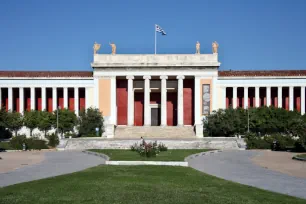
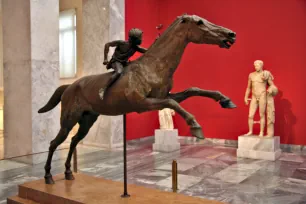
The museum was created in the late nineteenth century and combined collections that were previously spread out over the city. It is housed in a large neoclassical building designed by architects Ludwig Lange and Panagiotis Kalkos. Ernst Ziller, who was responsible for its monumental facade, completed the building in 1889. The museum opened its doors to the public two years later, in 1891.
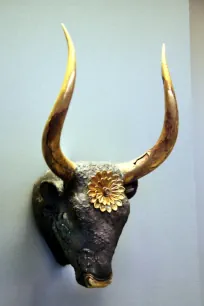
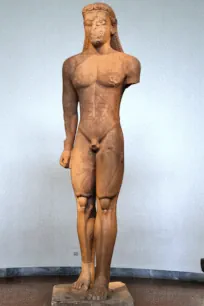
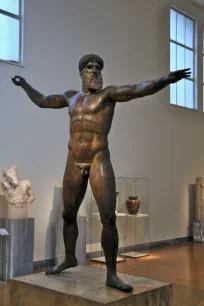
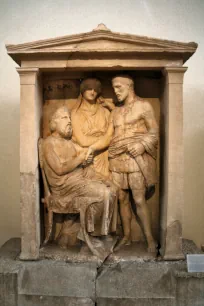
Museum Collection
The National Archaeological Museum has an impressive collection spanning from the seventh millennium BC until the fifth century AD. Sculptures and prehistoric treasures are on the ground floor. The large vase collection occupies most of the museum’s second floor. Unfortunately, many rooms are often not accessible due to staffing shortages.
Prehistoric Collection
The oldest artifacts in the museum are small statues, clay vases and working tools that were found in Greece and Troy. The objects date back to the Neolithic Age, which spans an era roughly from the seventh millennium to the late fourth millennium.
There is also a fine selection of iconic Cyclad figures, found on the Cyclad islands and dating back to the third millennium. More such minimalist sculptures can be found in the Museum of Cycladic Art. Don’t miss the small statue of a harpist.
The most splendid exhibit in the Prehistoric galleries and possibly the most interesting collection in the museum is the Mycenaean collection. Wonderful treasures from 1600 BC to 1100 BC, often decorated with gold, can be admired here. Look for the gold funerary mask, the bull with golden horns, the decorated daggers and swords, the colorful wall paintings and golden lion head. Many of these treasures were found in the royal tombs of Mycenae.
Sculpture Collection
The museum’s sculpture collection is spread out over some thirty rooms and occupies most of the ground floor. The development of Greek sculpture, from the eighth century BC to the fourth century AD, is shown here with a large number of impressive statues.
The earliest monumental sculptures were Archaic, a style influenced by Egyptian sculpture. Most statues from this era are Kouroi, large nude statues of young boys.
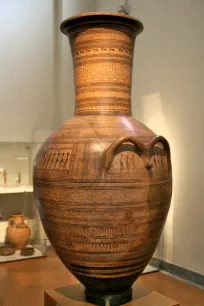
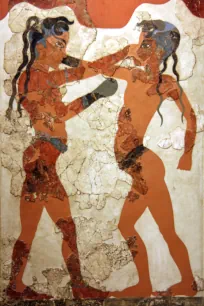
The Classical period was followed by the Hellenistic and the Roman period. A highlight from this era is the jockey from Artemision, from 140 BC.
During the Classical period, the statues became more lifelike. A masterpiece from this era is the bronze statue of Poseidon from around 450 BC. Some magnificent late classical bronzes you shouldn’t miss include the Antikythera Ephebe, from around 340 BC and the boy from Marathon, also from 340 BC. The museum also has many funerary monuments from the Classical period with magnificent reliefs. Most of these were found in Kerameikos.
Vase Collection
The second floor of the National Archaeological Museum contains the enormous vase collection, which gives an overview of the evolution of Greek pottery from the eleventh century to the fourth century BC. Most interesting are the many painted vases, which give insight in the daily lives of the ancient Greek, with scenes that range from erotic to religious.
The Dipylon amphora, a large vase from around 750 BC, can be found on the ground floor. The clay vase is 160 centimeters high and decorated with geometric patterns.
More Highlights
Other noteworthy sights in the museum include the wall paintings from Akrotiri. The colorful paintings date back to 1500 BC and show scenes from daily life. The museum also has an Egyptian collection with statues, sarcophagi, jewelry and pottery. There are also some private collections housed in the museum, most notably the Stathatou collection, with jewelry from the Middle Bronze Age to the Byzantine period.
- Next: Temple of Zeus
- More Sights & Attractions in Athens

